The discrepancy in intonation between a tempered pitch or interval and its intended JI equivalent. Usually measured in cents.
In Yahoo tuning list message (), Dave Keenan presented a spreadsheet giving the maximum error of every EDO between 5 and 171 inclusive, from all possible subsets of combinations of prime-factors within the 19-limit.
I have chosen small subsets of this totality, to present on some column graphs in various perspectives. My subsets limits the cardinality of the EDOs first to 5 - 22, then to 5 - 41, and uses a prime-limit of 11. Here is the portion of Dave's table which is relevant to my graphs:
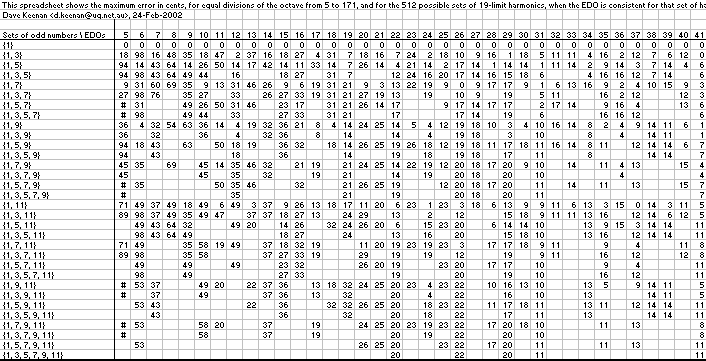
In the graphs below, the legend along the right side shows the colors which represent the EDOs, and the three axes show: 1) the particular combination of prime-factors, 2) the cardinality of the EDO, and 3) the maximum error in cents of that EDO for the particular set of prime-factors given.
(Note that I could not always get an axis to label every step, particularly the "primes" axis. The table above must be consulted in order to know exactly which set of prime-factors is involved in a row of columns.)
5edo to 22edo, "side" view
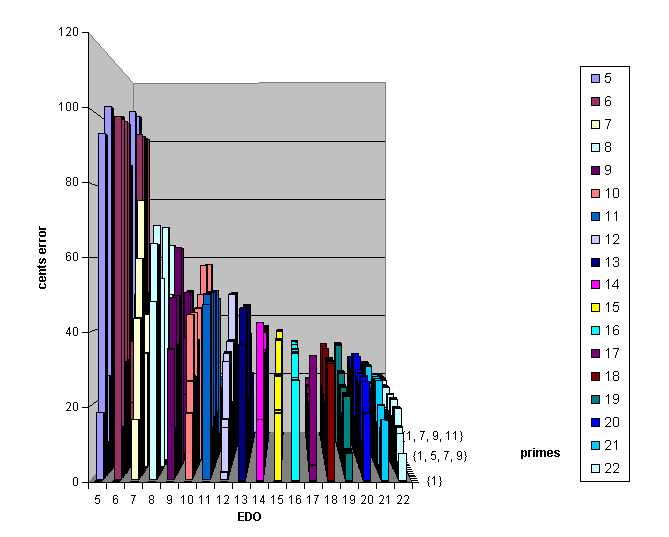
5edo to 22edo, "front" view
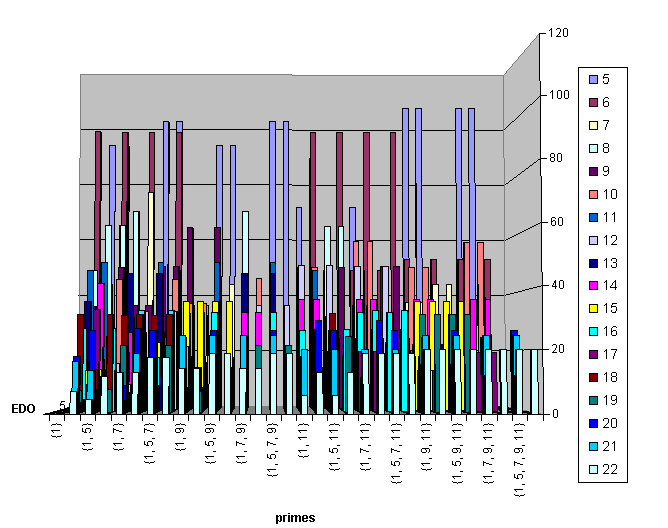
5edo to 41edo, "side" view
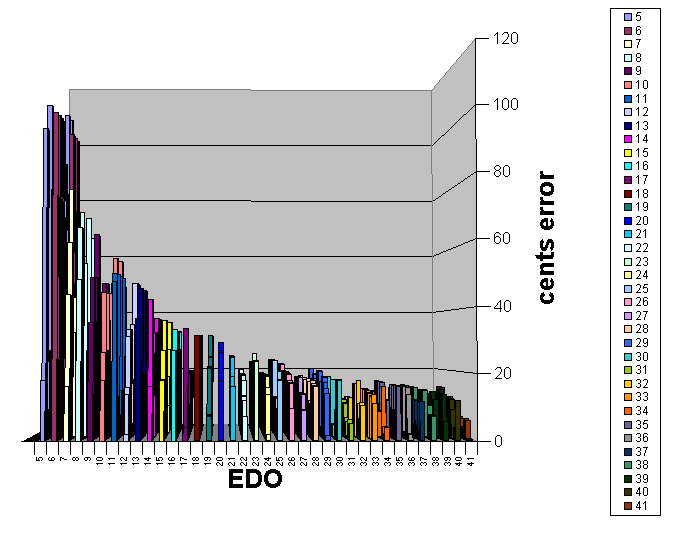
5edo to 41edo, "front" view
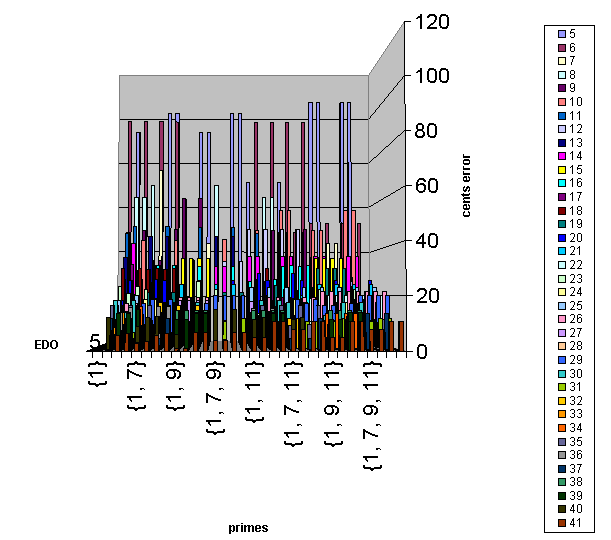
5edo to 41edo, "aerial" view
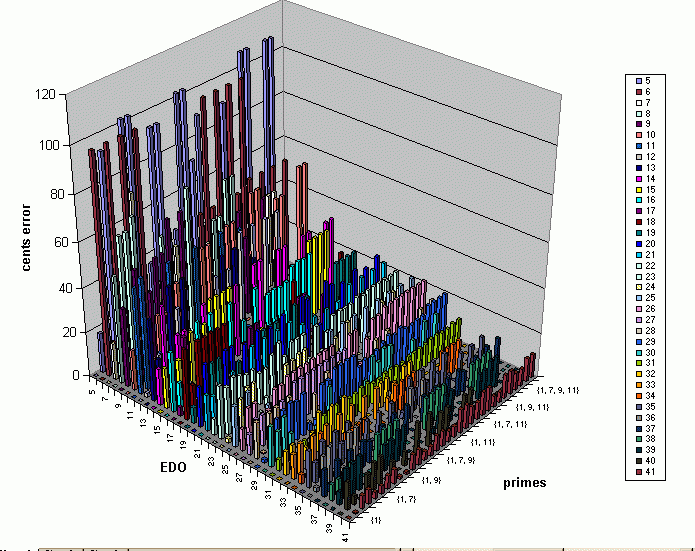
And here's a graph with a perspective similar to the one directly above, but using the "area" rather than "column" style, and going a little further, to 53edo:
5edo to 53edo, "aerial" view
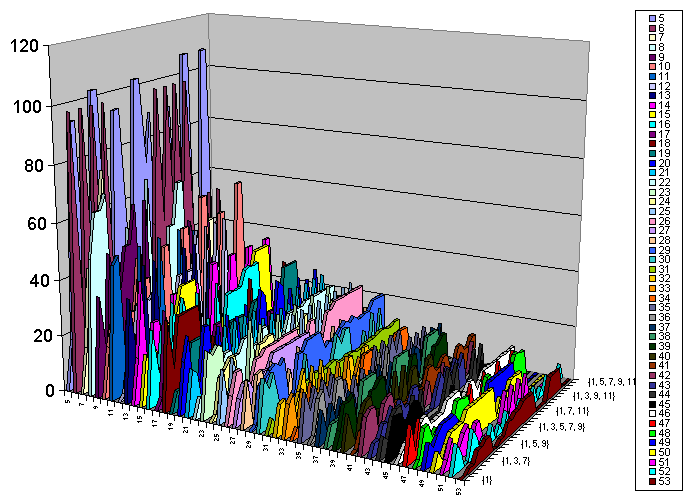
Many other small logarithmically-equal intervals have been used as interval measurement units. The most common after cents are millioctaves and savarts. Others that may be found occassionally are jots, grads, tuning units, heptamerides, merides, and moria.
see also anomaly
[from Joe Monzo, JustMusic: A New Harmony]